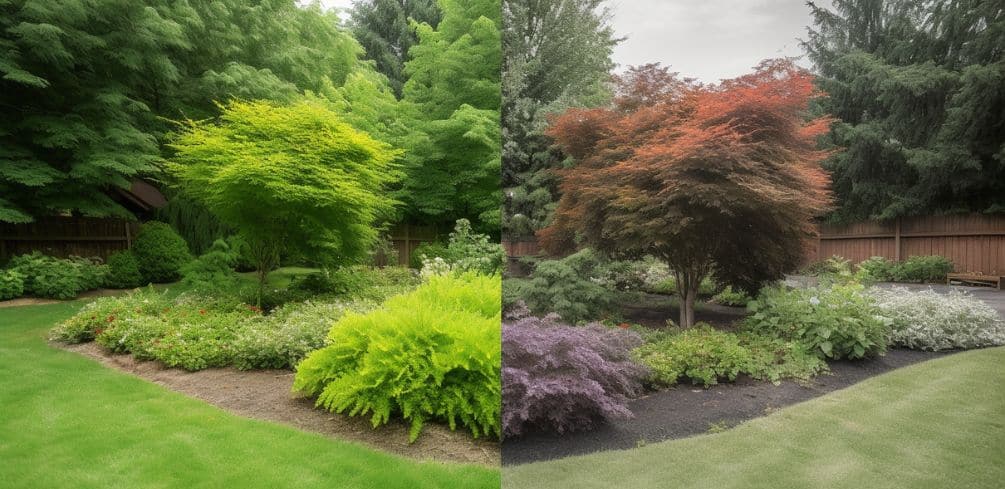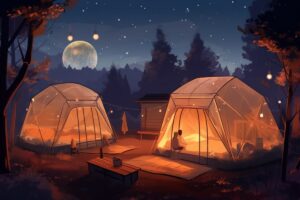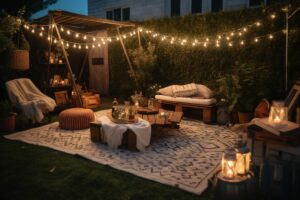You’ve probably used the terms ‘yard’ and ‘garden’ interchangeably at some point, but have you ever stopped to wonder if there’s actually a difference between a Yard Vs Garden (according to Americans, there might be)?
It turns out that yards and gardens have distinct characteristics, functions, and even design principles that set them apart.
So let’s embark on this journey of discovery together to truly understand what makes each space unique.
So let’s dig in – both figuratively and literally – as we unearth the fascinating world of yards versus gardens!
Historical and Cultural Origins
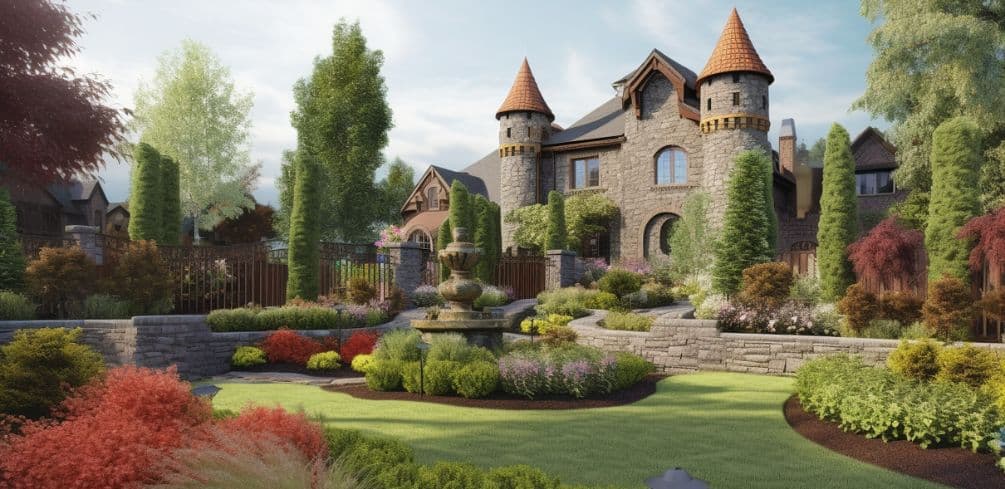
You might be surprised to learn how historical and cultural origins play a significant role in shaping our understanding of these outdoor spaces. Ancient landscaping practices and horticultural heritage have significantly influenced the way we perceive yards and gardens today.
The concept of cultural gardens, which are often specific to a particular region or tradition, showcases the diverse ways people have interacted with nature throughout history.
Garden evolution has been shaped by various historical influences, such as religious beliefs, artistic movements (like painting garden rocks), and social structures that dictated how people used their outdoor space.
As you delve deeper into this fascinating subject, you’ll uncover an intricate tapestry of human-nature relationships woven across time and cultures. From the carefully planned geometric designs of Islamic gardens to the sprawling natural landscapes in European parks, each garden style tells a unique story about the culture it represents.
Horticultural heritage is deeply rooted in many societies; for instance, Chinese scholar gardens embody philosophical ideals, while English cottage gardens reflect a longing for simpler times gone by.
By examining these diverse historical influences on yard and garden design, you’ll better understand what sets them apart – ultimately satisfying your subconscious desire to understand this captivating topic.
Defining Characteristics and Functions

In this section, let’s dive into the unique features and purposes of these outdoor spaces to see if they’re as distinct as one might think.
The primary difference between a yard and a garden is the intent behind their design and use. A yard is typically an open space composed mainly of grass, serving as a buffer or transition area between a house and the surrounding environment.
Its primary purpose may be for aesthetic appeal or recreational activities such as playing, relaxing, or socializing.
On the other hand, a garden is specifically designed with thought given to plant selection, soil improvement, watering techniques, pest control, and seasonal transitions.
Gardens often have specific functions that extend beyond aesthetics; for example, they may provide food through fruit trees or vegetable plots or offer habitats for wildlife.
- Plant selection: While yards mostly consist of grasses and a few ornamental plants (if any), gardens showcase intentional diversity in types of plants like flowers, vegetables, herbs, shrubs, and trees – all chosen based on factors such as climate compatibility and personal preferences.
- Soil improvement: Gardening enthusiasts invest time in understanding their soil’s composition to enhance fertility levels by adding composts and organic matter – promoting healthy plant growth.
- Watering techniques: Gardens require customized irrigation systems that cater to each plant’s water requirements, while lawns can be watered uniformly using sprinklers.
- Pest control: Yards generally don’t call for extensive pest management strategies compared to gardens where proactive measures are undertaken, like companion planting or introducing beneficial insects to maintain balance within the ecosystem.
These defining characteristics highlight how gardens require more planning and maintenance than yards due to their diverse flora requiring attention towards nurturing healthier environments where plants thrive harmoniously together – catering not only to human senses but also providing ecological benefits for various species inhabiting those spaces.
Yards are more for a place where kids can play and ride Power Wheels on the grass. In contrast, gardens are much more fancy and are great for a stroll through them with your significant other.
Designing and Maintaining Outdoor Spaces
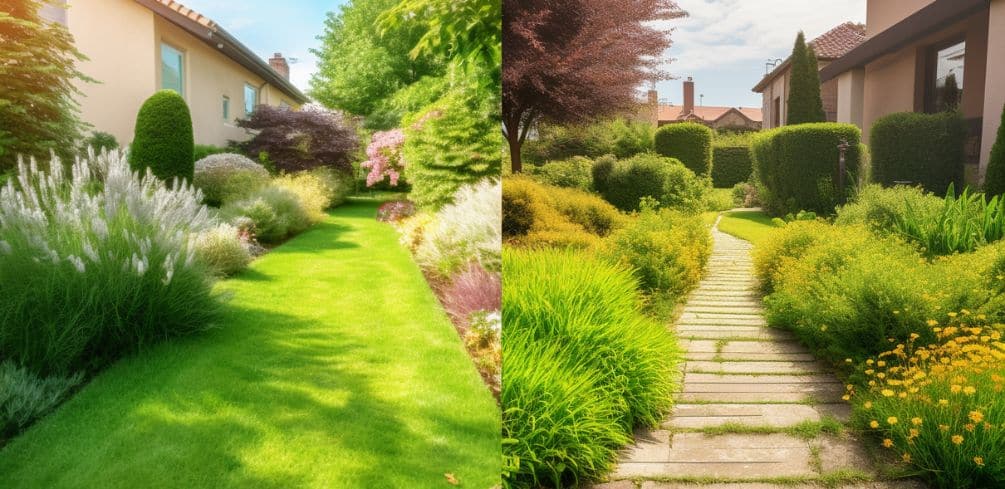
As we venture into the realm of designing and maintaining outdoor spaces, it’s like tending to a symphony of nature where you’ll orchestrate the delicate balance between form, function, and sheer beauty.
To create an aesthetically pleasing yet functional yard or garden, it’s crucial to keep up with landscape trends and incorporate eco-friendly designs that work harmoniously with the environment.
This means paying attention to elements such as outdoor lighting, water features, and plant selection – all key factors in creating a sustainable and visually appealing outdoor space.
When selecting plants for your yard or garden, consider native species that require less water and maintenance while providing habitat for local wildlife. Incorporate water features such as ponds or fountains which not only add visual interest but also help in conserving water through recirculation systems.
Outdoor lighting should be efficient and strategically placed to accentuate focal points without causing light pollution. LED lights are an excellent choice for their energy efficiency and durability.
Another important aspect of designing outdoor spaces is incorporating eco-friendly materials such as permeable pavers that allow rainwater to infiltrate into the ground instead of running off into storm drains – this helps reduce erosion, flooding issues, and pollution.
In summary, striking a fine balance between aesthetics and functionality while keeping sustainability in mind will ensure your yard or garden becomes an inspiring sanctuary for years. There is also an idea of a natural playground in the backyard.
Conclusion
So, you see, the age-old debate of yard vs. garden is much like comparing apples to oranges. While they may seem similar at first glance, their unique characteristics and functions make them distinct.
The next time you’re out in your own outdoor oasis, take a moment to appreciate whether it’s more of a yard or a garden. And remember that whichever it may be, it’s yours to enjoy and cultivate as you please.
